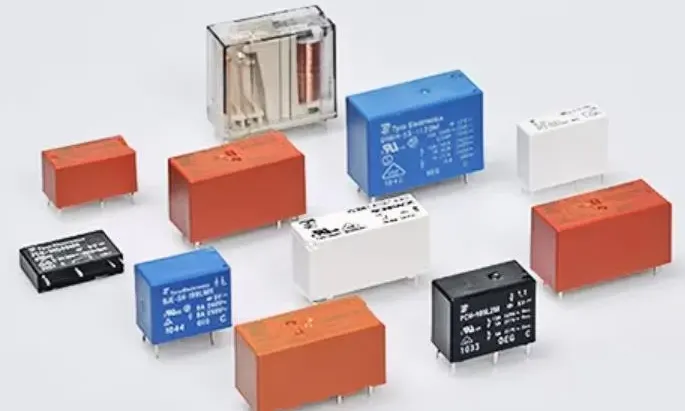A relay is an electrical control device used to control and protect circuits. It enables a low-power signal to control the opening and closing of a high-power circuit. Relays are commonly used in automation systems, such as power protection, motor control, and signal switching. The core working principle involves electromagnetic induction, thermal effects, or mechanical action.
Main Components of a Relay
- Input Section
- Includes a coil or sensor that receives control signals (e.g., voltage, current, or temperature).
- Driving Section
- Typically an electromagnetic mechanism that generates mechanical movement when the input signal reaches a threshold.
- Output Section (Contacts)
- The contacts switch the circuit on or off via mechanical movement, achieving the control objective.
Working Principle of a Relay
When the input terminal receives an appropriate signal (such as current or voltage), it generates an electromagnetic field or another driving effect, which moves the contacts to open or close the circuit. For example:
- When the coil is energized, it creates a magnetic field that attracts the armature, causing the contacts to switch.
Types of Relays
Relays are classified into several types based on their working principles and applications:
- Electromagnetic Relays: Operate on electromagnetic induction.
- Solid-State Relays (SSR): Use semiconductor devices instead of mechanical contacts, offering faster speed and longer life.
- Thermal Relays: Operate based on temperature changes, often used for motor overload protection.
- Time Relays: Provide delayed switching.
- Current and Voltage Relays: Operate based on changes in current or voltage.
Applications of Relays
- Automation Systems: Used in PLC control systems for signal transmission.
- Power Systems: For equipment protection and monitoring.
- Household Appliances: To control compressors, heating elements, etc.
- Traffic Control: For traffic lights and railway electrical systems.



